The Eastern Yellow Robin’s piping call is one of the first to greet us each morning, along with the Laughing Kookaburra and the Australian Magpie.
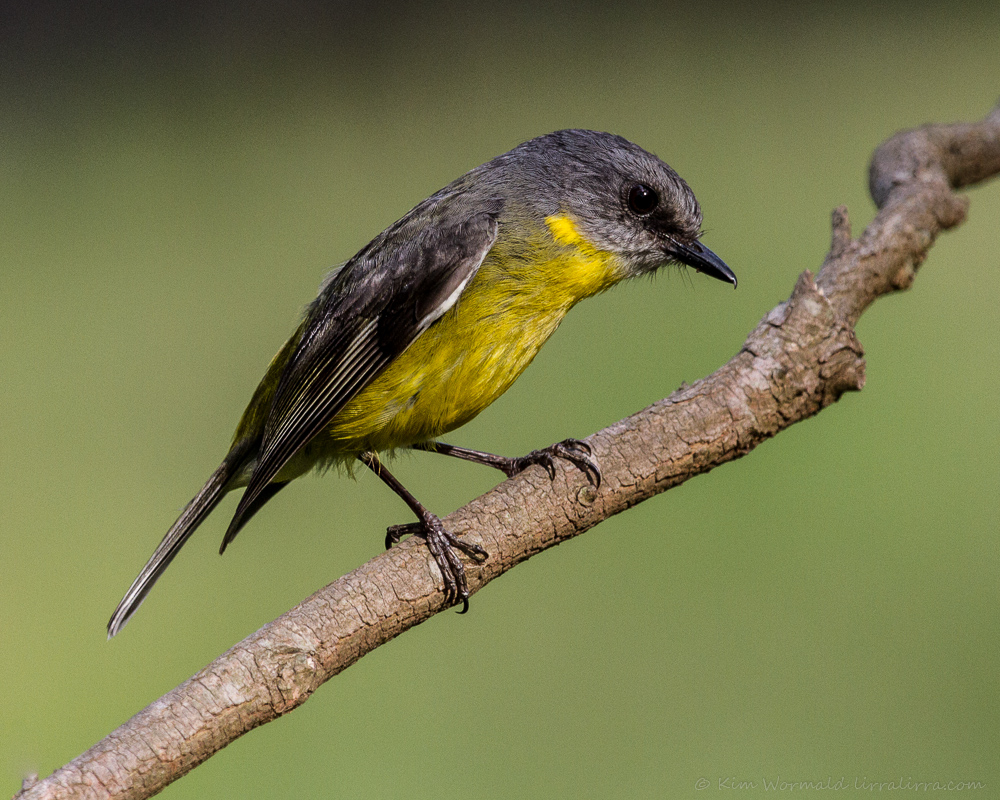 Eastern Yellow Robin (Eopsaltria australis)
Eastern Yellow Robin (Eopsaltria australis)
Canon 7D, 100-400mm L IS USM, 1/640, f/5.6, ISO 640, focal length 370mm
Eastern Yellow Robins must have phenomenal eyesight; they perch and pounce for food and I’ve seen them fly several metres to take invertebrates from the ground. This robin has an intent look in its eye and its body appears longer and thinner than usual as it leans forward ready to capture its prey. These robins are about 16cm in length with a weight of 19g and they usually appear more ‘cuddly’.
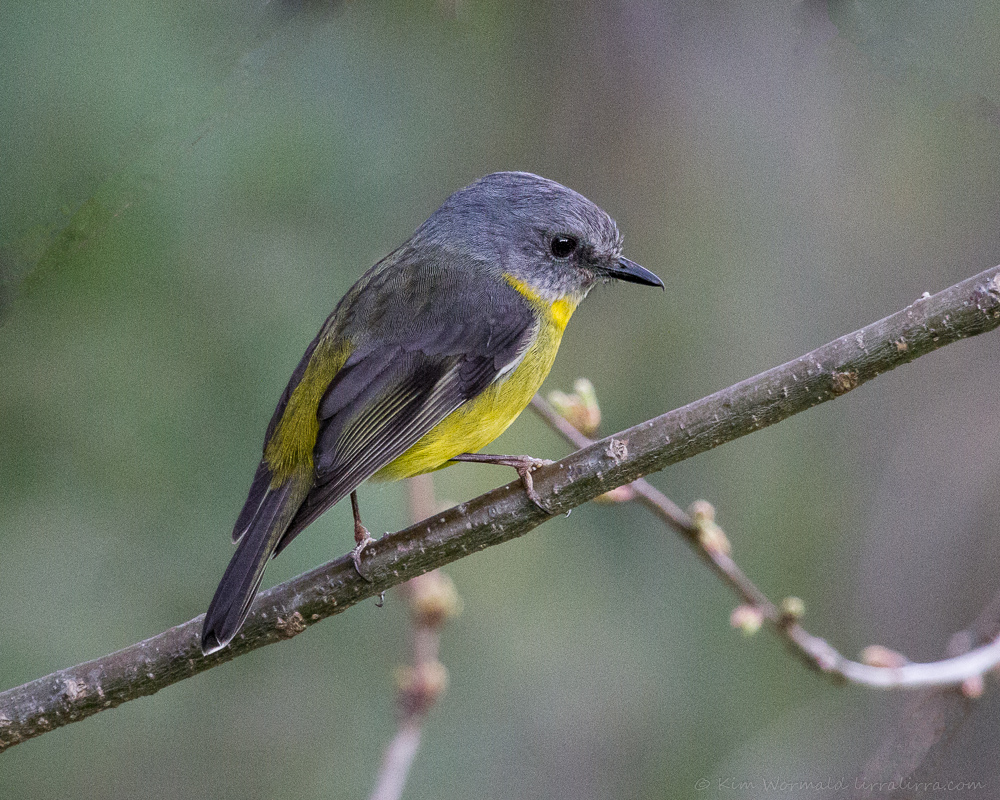 Eastern Yellow Robin (Eopsaltria australis)
Eastern Yellow Robin (Eopsaltria australis)
Canon 7D, 100-400mm L IS USM, 1/640, f/5.6, ISO 3200, focal length 400mm
The Eastern Yellow Robin is predominantly grey and yellow with a whitish throat and an olive-yellow rump which is visible in some of today’s images.
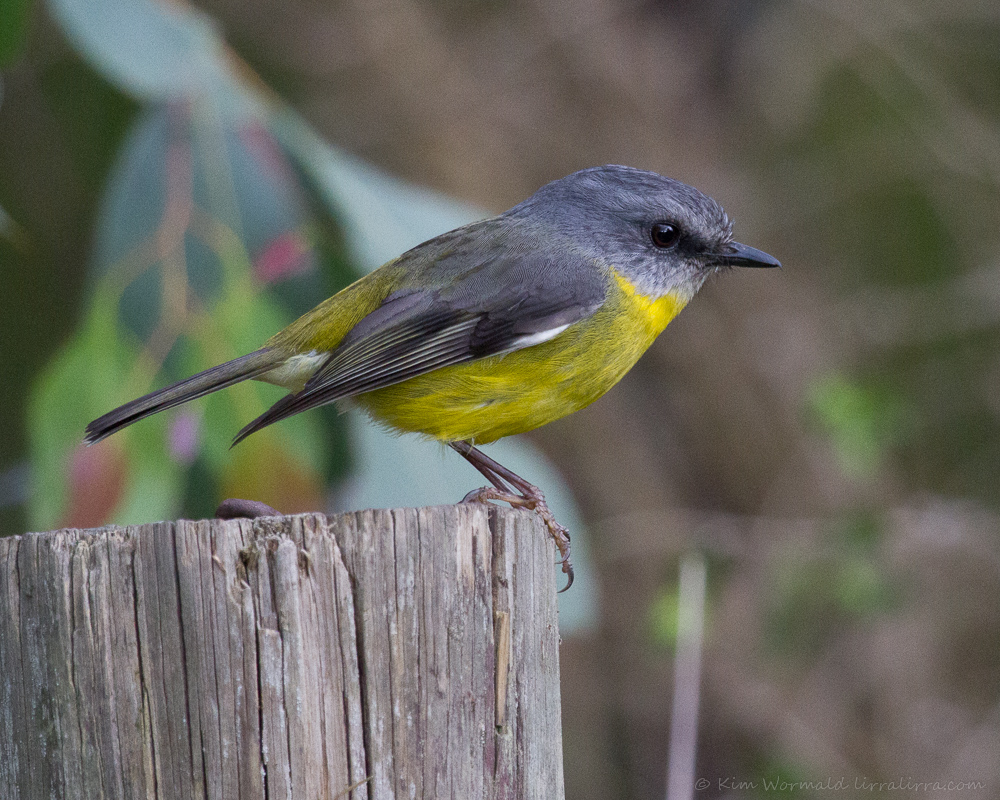 Eastern Yellow Robin (Eopsaltria australis)
Eastern Yellow Robin (Eopsaltria australis)
Canon 7D, 100-400mm L IS USM, 1/500, f/5.6, ISO 1600, focal length 400mm
Eastern Yellow Robins often perch on tree trunks and smallish branches fairly close to ground level but they also use any likely looking perch including verandah railings and fence-posts like the one in the image above.
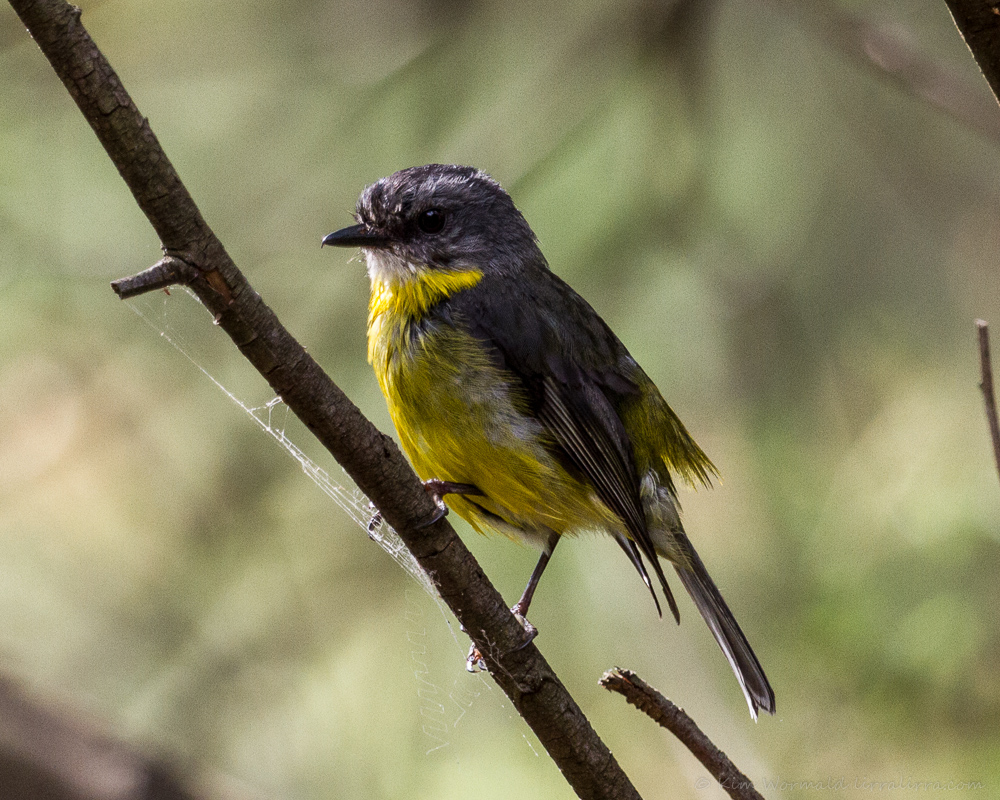 Eastern Yellow Robin (Eopsaltria australis)
Eastern Yellow Robin (Eopsaltria australis)
Canon 7D, 100-400mm L IS USM, 1/500, f/5.6, ISO 800, focal length 380mm
I like the soft look of this Eastern Yellow Robin and I like the clarity of the cobweb too! After seeing so many birds using cobwebs for their nests I tried to collect some myself and was surprised at how easy it is.
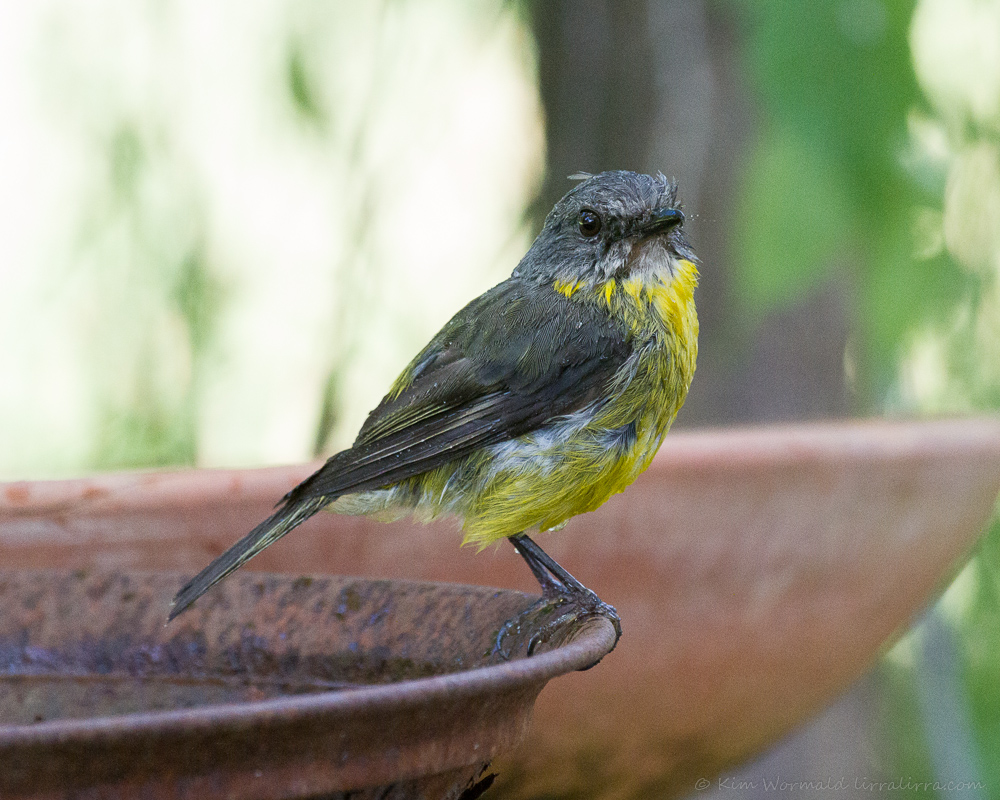 Eastern Yellow Robin (Eopsaltria australis)
Eastern Yellow Robin (Eopsaltria australis)
Canon 7D, 100-400mm L IS USM, 1/500, f/7.1, ISO 2500, focal length 400mm
Like most birds Eastern Yellow Robins like to take an occasional bath. This wet bird found a little water in the bottom of an old gold-pan.
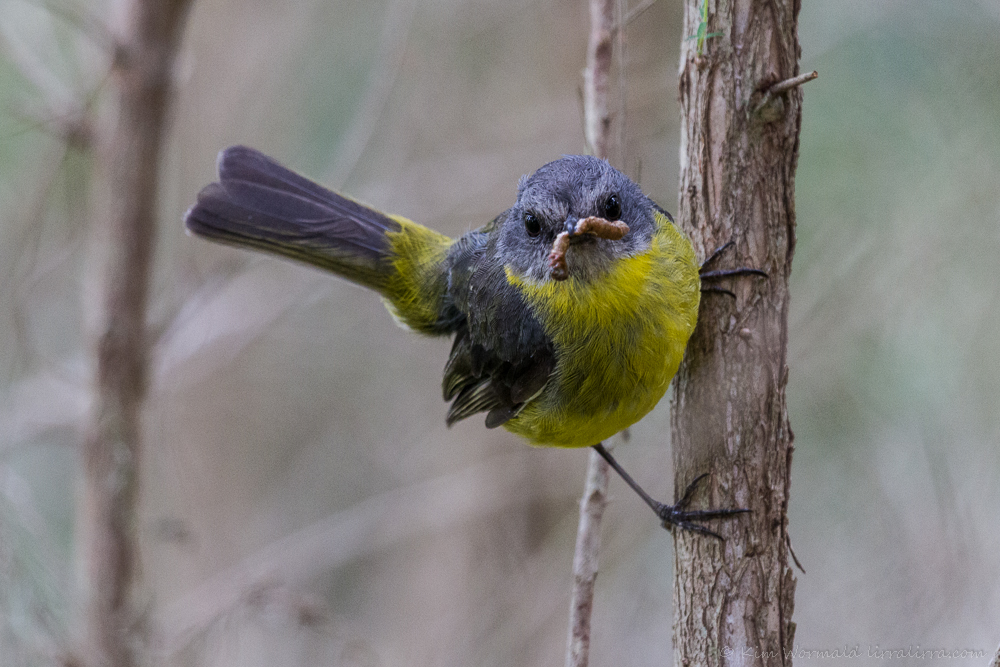 Eastern Yellow Robin (Eopsaltria australis)
Eastern Yellow Robin (Eopsaltria australis)
Canon 7D, 100-400mm L IS USM, 1/40, f/5.6, ISO 1600, focal length 400mm
Exciting news – Eastern Yellow Robins are nesting! I went into the bushland following a raptor, a Collared Sparrowhawk or Brown Goshawk, when I was faced with robins feeding two nestlings. I left immediately not wanting the raptor to wonder why I was lurking in the area. Most nestlings are mindful of being silent but the juvenile robins kept calling from the nest long after the parent birds had delivered food. It made me nervous for them, especially knowing the raptor is patrolling the area. I haven’t been back to look at the nest but am hopeful the robins have fledged safely.
I’ve posted images of Eastern Yellow Robins before, two that I was excited about when I used my camera for the first time (but which I would not post today as the first one is not sharp and the second has an unattractive head angle) in First-day Photos and a graphic series of one being eaten by a juvenile Brown Goshawk in Eastern Yellow Robin for lunch.
Happy birding, Kim

Wow amazing photographs. I can only imagine how long it might take sitting there silently up a tree waiting for that perfect picture. So not you! But so you! I particularly like the third one down. I know it is probably the most ordinary one but I really like it.
Thank you Leanne 🙂 It’s funny about the ‘sitting there silently up a tree’ part of birding. I was thinking the same thing out there today, how can I be so hyperactive usually but when it comes to nature (and children) I feel like there’s all the time in the world. There’s something nice and familiar about a robin on a fence post, I like it too.
What a gorgeous little bird Kim!
They are very sweet Mia. It was a shame to see one being eaten by the raptor last year, I hope the nestlings stay safe!